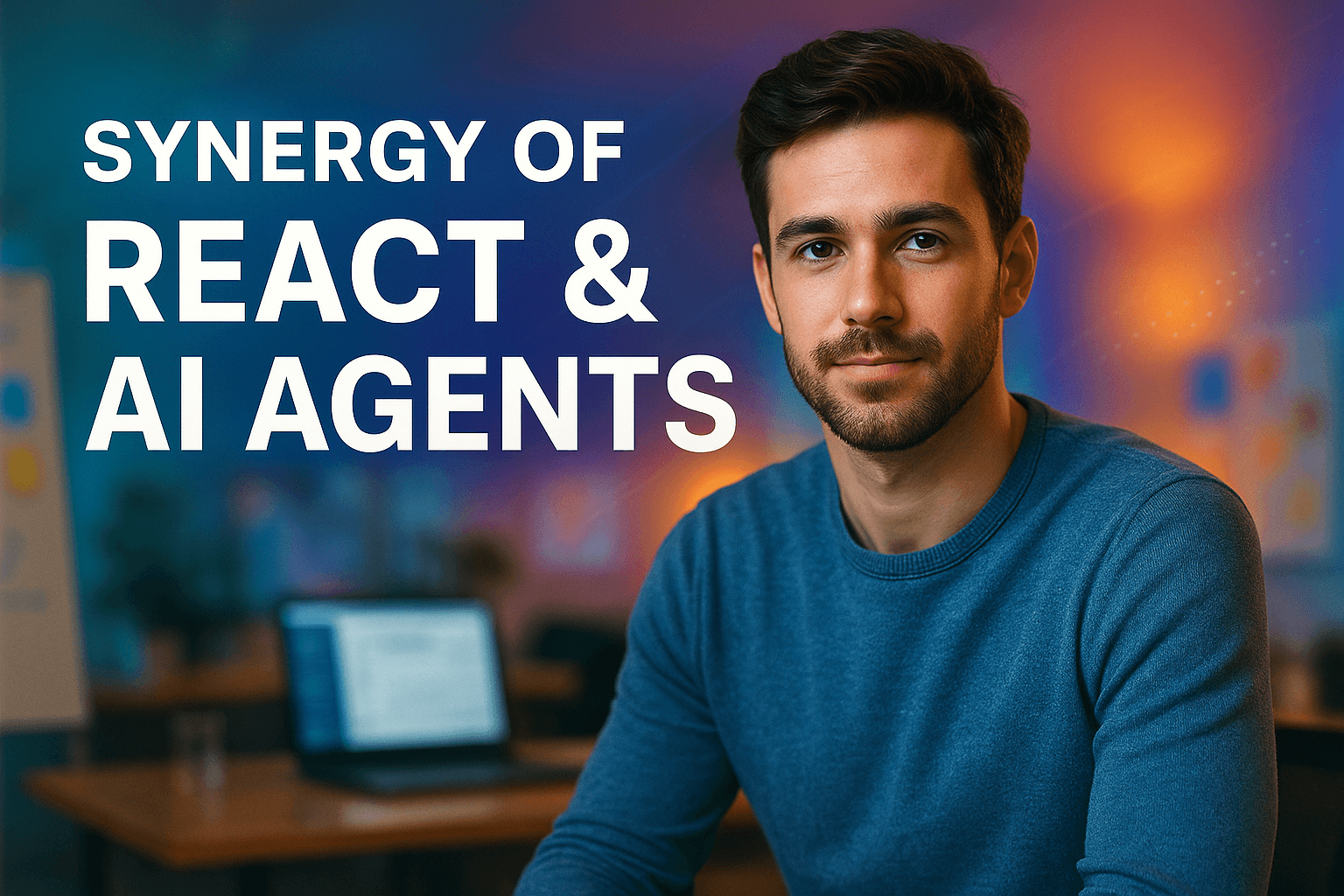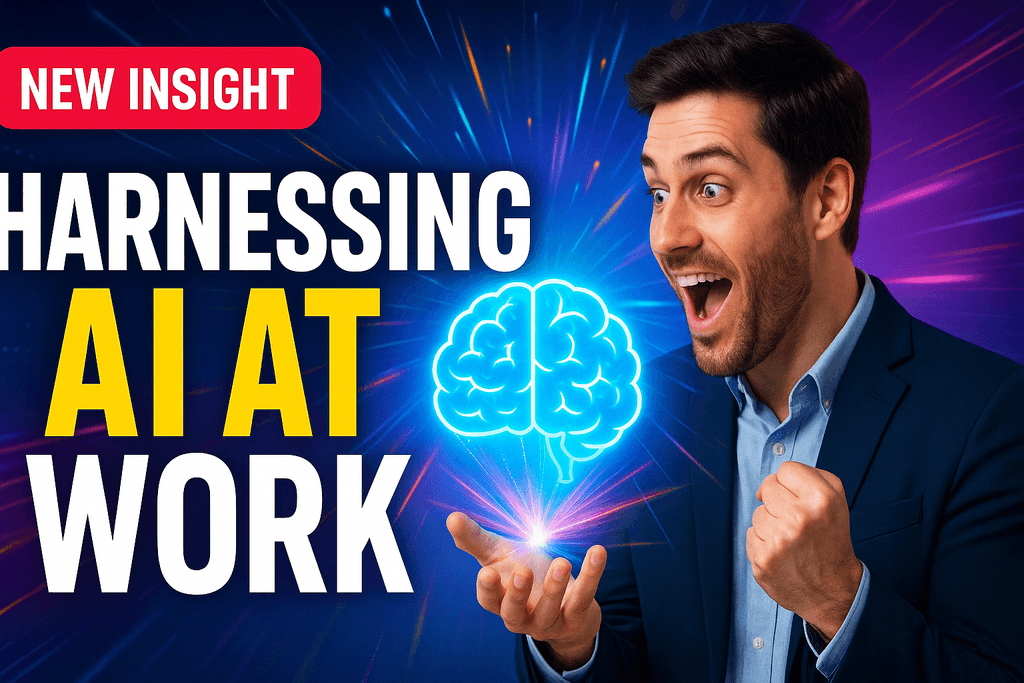
Table of Contents
Understanding the Synergy Between React and Orbitype's Agentic Cloud OS
API-driven development has revolutionized the way developers build applications, and the integration of AI agents takes this transformation to unprecedented levels. React's component-based architecture allows developers to create reusable UI components, while Orbitype provides an API-first approach to manage content through its innovative Agentic Cloud OS. This combination enables developers to build dynamic web applications more efficiently than ever before.
React's structure is naturally suited to Orbitype's API-driven content delivery enhanced by intelligent automation. Each React component can request specific data from Orbitype's API, with AI agents optimizing data flow and rendering it dynamically. This decoupling of content and presentation, augmented by autonomous digital workers, ensures that changes in the content do not require changes in the application code, making updates seamless and efficient while reducing manual intervention.
Enhanced Performance and Scalability with AI Workforce
One of the significant advantages of using Orbitype with React is the enhanced performance delivered through intelligent automation. Orbitype delivers content through API endpoints with AI agents optimizing data fetching, loading data only when needed and predicting future requirements. This reduces server load and improves response times, leading to a faster user experience while minimizing resource consumption.
Scalability is another critical factor in modern web applications, and Orbitype's AI workforce transforms how applications handle growth. Applications built with React and Orbitype can handle high traffic and content loads efficiently through autonomous scaling decisions made by AI agents. Since Orbitype is an Agentic Cloud OS, it manages content updates independently of the front-end with AI agents orchestrating workflows. Developers can update content in Orbitype without redeploying the application, ensuring continuous and uninterrupted service while AI agents monitor performance and optimize resources automatically.
Streamlining Workflows with AI-Powered Content Modeling
Orbitype's content modeling features are designed to streamline workflows for developers through intelligent automation and AI agent assistance. By creating and managing content types with AI-powered optimization, developers can structure content to fit React components perfectly while benefiting from autonomous content organization and intelligent suggestions. This structured approach ensures that content is organized and easily accessible, with AI agents continuously learning from usage patterns to improve efficiency.
For instance, in a blog application, you can create content models for "Blog Post," "Author," and "Category" with AI agents automatically suggesting optimal field configurations and relationships. Each model contains fields like title, body, author, and tags, with AI agents analyzing content patterns to recommend improvements. This setup allows React components to fetch and display data efficiently while AI agents handle content optimization, automated tagging, and intelligent categorization. The structured content models ensure that content is dynamically fetched and displayed, allowing for seamless updates orchestrated by autonomous digital workers.
Practical Implementation with AI Agent Orchestration
Building a Blog Application with AI Agents:
To illustrate, consider a blog application built with React and Orbitype's Agentic Cloud OS. Start by setting up content types in Orbitype for "Blog Post," "Author," and "Category" with AI agents automatically optimizing field relationships and suggesting content structures. These content types will have fields like title, body, author, and publish date, with AI agents handling automated content scheduling and intelligent publishing workflows. React components can then fetch and display this data dynamically while AI agents manage content optimization and performance monitoring.
In this setup, blog posts are displayed by components that request data from Orbitype's API, with AI agents predicting content needs and pre-loading relevant data. Each blog post is rendered using components that receive optimized data as props, with AI agents ensuring optimal performance and user experience. This method ensures that content updates in Orbitype are reflected in the application without requiring code changes, while AI agents handle automated content distribution and cross-platform publishing.
Developing a Product Catalog with Intelligent Automation:
Another example is a product catalog enhanced by AI workforce capabilities. Create a content model in Orbitype for "Product," including fields like name, description, price, and image, with AI agents automatically analyzing product data to suggest optimal categorization and pricing strategies. React components can then fetch and display product data, creating a dynamic and responsive catalog powered by intelligent automation that handles inventory management, price optimization, and customer behavior analysis.
Best Practices for AI-Enhanced Development
Optimizing API Calls with AI Agents: To minimize the number of API calls and maximize efficiency, leverage AI agents that intelligently predict data requirements and implement smart caching mechanisms. AI agents can analyze usage patterns to fetch only necessary data, implement predictive loading for anticipated requests, and automatically optimize caching strategies. Implementing pagination or lazy loading for large datasets becomes more effective when AI agents predict user behavior and pre-load relevant content sections.
AI-Powered Content Modeling Best Practices: Define clear and consistent content types with AI agent assistance to avoid redundancy and optimize data structures. Use meaningful field names and data types while allowing AI agents to suggest improvements based on usage analytics and performance metrics. Regularly review and update content models with AI-driven insights to match evolving requirements and optimize for better performance and user experience.
Maintaining Performance and Scalability with Autonomous Systems: Monitor API performance through AI agents that continuously analyze system metrics and optimize queries automatically. Scale your Orbitype infrastructure intelligently with AI agents that predict load requirements and adjust resources dynamically. Use AI-enhanced CDN optimization and intelligent content delivery strategies to improve content delivery speed while reducing costs through automated resource management and performance optimization.
Orbitype's Agentic Cloud OS: Beyond Traditional Headless CMS
Orbitype represents a paradigm shift from traditional headless CMS solutions to a comprehensive Agentic Cloud OS where diverse use cases can be built and orchestrated by intelligent AI agents. At its core, Orbitype combines PostgreSQL databases with cloud storage (S3), enhanced by compute resources, workflow automations, and integrations with third-party APIs and webhooks through serverless functions. This foundation enables the creation of not just headless CMS systems, but also CRM, ERP, e-commerce platforms, and virtually any digital application.
What sets Orbitype apart is its integrated AI workforce—intelligent agents that have access to all data and processes within the platform. These AI agents enable sophisticated automations and analyses that go far beyond traditional content management. They can autonomously manage customer relationships, optimize resource planning, orchestrate complex workflows, and make intelligent decisions based on real-time data analysis. This flexibility, combined with AI agent capabilities, ensures that businesses can adapt and scale without vendor lock-in, making every digital transformation truly future-proof.
The platform's versatile architecture allows React developers to leverage not just content management capabilities, but also intelligent business process automation, predictive analytics, and autonomous workflow orchestration. For comprehensive insights into workflow automation capabilities, explore our guide on automating content workflows with Orbitype's custom solutions.
Future-Proofing React Applications with AI Agents
The future of web development lies in intelligent, autonomous systems that can adapt and evolve with changing requirements. React applications built on Orbitype's Agentic Cloud OS benefit from continuous optimization through AI agents that monitor performance, predict user needs, and automatically implement improvements. These autonomous digital workers ensure that applications remain competitive and efficient without requiring constant manual intervention from development teams.
AI agents within Orbitype can automatically optimize React component rendering, manage state efficiently, and implement performance improvements based on real-world usage patterns. They can also predict scaling requirements, suggest architectural improvements, and even automate routine maintenance tasks. This level of intelligent automation transforms React development from reactive maintenance to proactive optimization, ensuring applications stay ahead of performance and user experience expectations.
For organizations looking to maximize the potential of AI-driven development, understanding the broader landscape of AI agent applications is crucial. Learn more about comprehensive AI agent use cases for maximizing enterprise efficiency to see how autonomous workflows can transform your entire development and business operations.
Conclusion: The Future of Intelligent Web Development
Combining React and Orbitype's Agentic Cloud OS offers numerous benefits for building dynamic web applications that go far beyond traditional development approaches. The synergy between these technologies, enhanced by AI workforce capabilities, delivers unprecedented performance, scalability, and content management efficiency. By leveraging Orbitype's content modeling features, AI-powered automation, and React's component-based architecture, developers can streamline workflows and create powerful, dynamic web applications that continuously optimize themselves.
Whether you're building a blog, a product catalog, an enterprise application, or any other digital solution, integrating React with Orbitype's AI agents provides a robust solution for managing and delivering content seamlessly while automating complex business processes. The platform's autonomous digital workers ensure that applications remain efficient, scalable, and competitive without requiring constant manual intervention. This represents the future of web development: intelligent, self-optimizing systems that adapt to changing requirements and user needs.
Try Orbitype's Agentic Cloud OS for your next React project and experience the advantages of AI-enhanced development firsthand. Discover how autonomous workflows, intelligent automation, and seamless integration can transform your development process and deliver exceptional user experiences that continuously improve over time.






















.png&w=1024&q=80)
